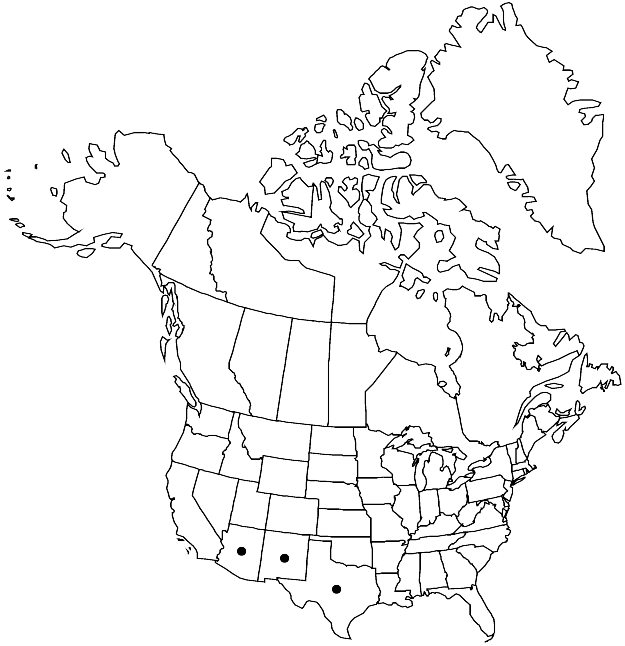Orthotrichum pycnophyllum
in J. K. A. Müller, Syn. Musc. Frond. 1: 709. 1849.
Plants 0.8–4 cm. Stem leaves loosely erect-spreading when dry, lanceolate, 2.5–4 mm; margins revolute to just below apex, often wavy and slightly notched near apex; apex gradually acuminate to long acuminate-cuspidate; basal laminal cells elongate, walls thick, nodose; distal cells 7–13 µm, 1-stratose, papillae 1 or 2 per cell, conic, size moderate. Specialized asexual reproduction absent. Sexual condition gonioautoicous. Seta 1–1.5 mm. Capsule immersed to fully exserted, usually 1/2–1/4 emergent, oblong-ovate to cylindric, 1.5–2 mm, smooth to slightly 8-ribbed; stomata superficial; peristome double; prostome absent; exostome teeth 16, separate to base, recurved, acute, obscurely and densely papillose; endostome segments 16, separate to base, well developed, thick, stout, of 2 rows of cells, narrower than exostome teeth, usually not erose, yellowish brown, coarsely papillose. Calyptra conic-oblong, smooth, moderately hairy, hairs smooth. Spores 17–29 µm.
Habitat: Branches and trunks of trees
Elevation: moderate to high elevations (500-2000 m)
Distribution

Ariz., N.Mex., Tex., Mexico, Central America (Guatemala, Panama), South America.
Discussion
Distinguishing features of Orthotrichum pycnophyllum are the 16 exostome teeth that are not connate at the base to form a membrane as in O. keeverae, 16 endostome segments, and a slightly ribbed capsule that is usually 3/4 emergent.
Selected References
None.